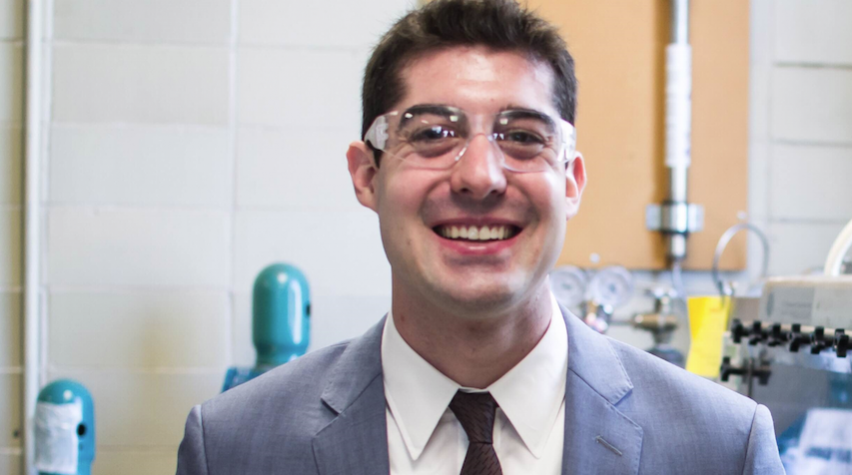
Innovative and exciting research is being performed each and every day by graduate students across the globe in all walks of chemical engineering. This post is a part of the Graduate Research Spotlight Series, which seeks to highlight some of the research being performed by AIChE's graduate student members. If you know of an AIChE member who is currently performing outstanding graduate research and has recently published a first-author paper, please let us know at ypc@aiche.org.
Where are you from?
Denver, Colorado
What university are you completing your graduate degree at?
Northwestern University
What field/program are you enrolled in?
Chemical engineering
What type of degree are you getting?
PhD
Where did you receive your undergraduate degree?
Washington University in St. Louis
What was your undergraduate major?
Chemical engineering
How many years have you been a member of AIChE? *
Seven
In layman’s terms please describe your specific field and what impact it may have on society.
Catalysts are advanced materials that can accelerate the rate of chemical reactions without themselves being consumed in the reaction. Catalysis research studies the design and performance of these advanced materials, and this technical field employs both scientists and engineers. Over 90% of existing chemical processes involve catalysts, whose resulting commercial products make up roughly 35% of the global GDP.
What is the title of your recently published research article?
Describe the highlights of your recently published paper.
As part of my doctoral work, under the advisement of Professor Justin M. Notestein at Northwestern, I have sought to understand supported oxide catalysts for the synthesis of epoxides with hydrogen peroxide (H2O2). H2O2 is an environmentally advantageous oxidant, and its process economics are not dependent on selling or disposing of alcohol co-product. Typically, epoxidation catalysts for H2O2 have focused on titanium oxides (TiOx) supported on or co-condensed with silica (SiO2), while much of the rest of Group IV and V transition metals have seen relatively little research. I have developed a periodic family of precursors designed to give the same active site geometry and near 100% of the metal being catalytically active, allowing first comparisons of the intrinsic activity of all of Groups IV and V.
From this study, I discovered that, on a per-metal basis, high-performing (and rarely reported) niobia-silica catalysts are highly active and selective — but only when synthesized to give highly dispersed active sites. I then developed a chemical titrant approach to quantify the fraction of kinetically-active niobium (Nb) when catalysts are synthesized by other methods, to connect synthesis to structure to reactivity. These first-reported quantitative maps of structural properties and catalytic consequences link key catalyst descriptors of supported Nb-SiO2 to enable rational design for next-generation oxidation systems, as may be relevant to the production of important epoxy monomers.
To learn more, see Nicholas's recently published article.

What are your plans after completing your graduate degree?
Following graduation in March 2017, I will begin a post-doctoral researcher position at the National Renewable Energy Laboratory (NREL) in Golden, CO, working in the research group of Dr. Gregg T. Beckham. There, we will study chemical catalytic routes to the deconstruction of lignin, a recalcitrant component of plant cell walls in certain types of biomass, as a renewable platform for valuable chemicals and transportation fuels.
What motivated you to pursue your graduate work?
I've always been fascinated by the "hows" and "whys" of chemistry, while being driven by the practical aspects of chemical engineering and applications in the industry. Catalysis research is a natural bridge between the two disciplines, and my experience as a graduate student at Northwestern has been invaluable in training me to tackle these interesting and complex problems.
What is your favorite moment in chemical engineering history?
My personal favorite moment is the development of the fluidized catalytic cracking (FCC) process technology, one of the most important discoveries in the history of catalysis and reaction engineering.
If you weren’t a ChE what would you most want to be?
If I weren't a chemE, I'd be a jazz musician! In my spare time I play jazz music on the electric bass and electric guitar.
Do you have any advice for current or future graduate students reading ChEnected?
My research mantra is "look through drawers." You never know what you'll find.
You can reach Nicholas through his LinkedIn profile.



Comments
This is quite educating.